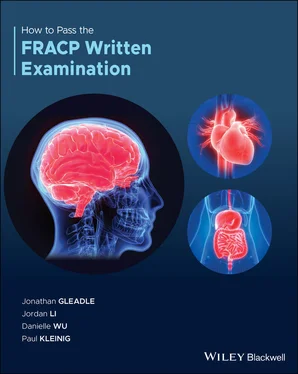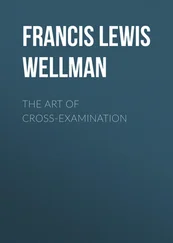5 5. Which type of circulatory shock is the most common in patients in the intensive care unit?Cardiogenic shock.Distributive shock.Hypovolaemic shock.Obstructive shock.
6 6. A 48‐year‐old man presents to the Acute Medical Unit because he experienced chest discomfort three hours ago and generalised weakness in the last two days. He is known to have IgA nephropathy and hypertension, but he does not have regular follow up. His BP is 90/60 mmHg. His rapid troponin level is 1320 ng/L [<29]. His previous ECG was normal 1 year ago when he was admitted for a kidney biopsy.Which one of the following ECGs would make you call the on‐call cardiology registrar immediately and prepare the patient to go to the cardiac catheter laboratory?
7 7. Which one of the following is NOT an indication for extracorporeal membrane oxygenation (ECMO) treatment?Acute myocardial infarction with cardiogenic shock.Cardiac failure due to intractable arrhythmias.Postcardiac arrest as part of advanced life support.Refractory septic shock in adults with preserved left ventricular function.
8 8. You are reviewing a 78‐year‐old woman who was admitted yesterday with an infective exacerbation of COPD, with a baseline FEV1 of 40% of the predicted value. She has become progressively drowsier throughout the day, as her GCS is now 12. She is confused and responds to voice on review, is moving all four limbs spontaneously and eyes open to voice. On examination, she is saturating 92% on 4 L of oxygen via nasal cannulae, her respiratory rate is 20/min, and other observations are normal. Her neurological examination shows normal power, tone reflexes and sensation, pupils are normal, but there is slowed thinking and lack of interest in the world, and she is not oriented to place or time. She takes 20 mg of slow release morphine for relief of breathlessness daily and is not on long‐term oxygen therapy at home. There is no obvious tremor or myoclonus at rest, but asterixis is present.Which of the following is likely the biggest contributor to her drowsiness?Hypercarbia.Hypoxia.Infection.Opiates.
9 9. A 65‐year‐old has an anterior myocardial infarction. He has cardiogenic shock despite successful revascularisation. An intra‐aortic balloon pump (IABP) is inserted, which will:Decrease diastolic blood pressure.Increase the afterload of left ventricle.Increase coronary blood flow.Increase systolic blood pressure.
10 10. Which of the following outcomes has the LEAST evidence for being improved by advance care planning?Comfort at the end of life.Decreased use of hospital resources.Enhanced surrogate decision making.Patient and family satisfaction.
11 11. A 62‐year‐old man is admitted to intensive care unit because of necrotising fasciitis of the left leg after sustaining an injury while changing a flat tyre. He is known to have type 2 diabetes and hypertension.Which one of the following complications is LEAST likely in this patient?Capillary leak syndrome.Intravascular haemolysis.Posterior reversible encephalopathy syndrome.Systolic heart failure.
12 12. A 25‐year‐old woman is brought in by ambulance to the emergency department. Her partner has found a few empty packets of immediate‐release paracetamol (~40 gm paracetamol ingestion) at home. Her family thinks she might have taken an overdose of paracetamol within the last 6 hours after she was last seen well. Past medical history includes depression, borderline personality disorder, and previous suicide attempts. On examination, her temperature is 37 °C, BP is 85/50 mmHg, HR is 110 bpm, and respiratory rate is 12/min. Her investigation results are shown below:TestsResultsNormal valuesUrea6 mmol/L2.7–8.0Creatinine170 umol/L45–90Haemoglobin129 g/L115–155Platelet count170 x 109/L150–450Glucose level4.0 mmol/L3.2–5.5Phosphate level0.80 mmol/L0.75–1.50Alanine aminotransferase (ALT)150 U/L0–55INR1.30.9–1.3pH on ABG7.347.35–7.45Arterial lactate3.5 mmol/L0.2–2.0Which one of the following is the appropriate next step of management?Commence activated charcoal.Commence ‘two‐bag’ N‐acetylcysteine infusion regimen.Commence ‘three‐bag’ N‐acetylcysteine infusion regimen.Urgent referral to the liver transplant unit.
13 13. You attend a Medical Emergency Teams (MET) call. The patient is a 64‐year‐old man who was admitted one hour ago because of an infective exacerbation of COPD and dehydration. His past medical history includes congestive heart failure and hypertension. ECG shows pulseless electrical activity (PEA) with no features of acute myocardial infarction. His troponin is normal on admission. PEA in this patient when compared with ventricular tachycardia (VT) or ventricular fibrillation (VF) cardiac arrest:Has a good prognosis as it is not likely caused by acute myocardial infarction.Is more common in patients with congestive heart failure.Is more common in patients with respiratory failure.Is not due to hypoxia or tension pneumothorax.
14 14. A 37‐year‐old woman has been admitted to intensive care unit (ICU) with pneumococcal pneumonia. She has a history of alcohol induced liver cirrhosis and has required intubation and ventilation.Which of the following is correct regarding prophylaxis with proton‐pump inhibitors (PPIs) or histamine H2–receptor antagonists against gastrointestinal bleeding?Clinically important gastrointestinal bleeding occurs in 30% of ICU patients.Patients with mechanical ventilation but no enteral feeding are at higher risk of bleeding.PPIs are clearly superior to ranitidine in reducing bleeding and ICU mortality.Prophylaxis reduces ICU mortality.
15 15. In patients with AKI due to septic shock who are admitted to the intensive care unit, which of the following statements regarding dialysis treatment is correct?AKI is not associated with worsening mortality.Delayed dialysis compared to early dialysis has a lower mortality rate.Early dialysis compared to delayed dialysis has a lower mortality rate.There is no difference in mortality rate in early vs. delayed dialysis.
16 16. A 70‐year‐old woman presents to the emergency department following a 3‐day history of chills and dysuria. She reports dizziness and light‐headedness. She has a temperature of 38.6ºC, heart rate of 125 bpm and her BP is 85/55 mmHg. Physical examination reveals dry mucous membranes, undetectable JVP. She is tachycardic with no adventitious sounds and her chest is clear. There is suprapubic tenderness. Her investigations reveal the following:TestsResultsNormal valuesSerum creatinine159 μmol/L45–90Urea27 mmol/L2.7–8.0Lactate5.0 mmol/L0.2–2.0Anion gap25 mmol7–17WCC20 x 109/L4–11Haemoglobin90 g/L115–155Urine microscopy>100 WBC/HPF, abundant bacteriaWhich of the following is most appropriate regarding management of this patient?Placement of central venous catheter and administration of intravenous fluid guided by central venous pressure.Intravenous fluid administration of 60ml/kg body weight.Intravenous fluid administration of 30ml/kg body weight.Intravenous fluid administration to achieve mean arterial pressure 85 mmHg.
17 17. A 43‐year‐old woman is admitted to a high dependency unit because of exacerbation of asthma. This is her third admission within 12 months. She is diagnosed with severe asthma. Which one of the following considerations in this case is INCORRECT?Approximately 50% of patients with severe asthma have type 2 inflammation.Exhaled nitric oxide should be monitored in patients with severe asthma and used to guide therapy.Mepolizumab is indicated for use as an add‐on treatment for patients with an eosinophilic phenotype of severe asthma.Recurrent exacerbations of severe asthma are often associated with gastroesophageal reflux.
18 18. 18.A 72‐year‐old man is day 7 in ICU because of severe biliary sepsis. He has been on piperacillin/tazobactam for 7 days and develops severe diarrhoea. He is diagnosed with severe Clostridium difficile colitis. His repeat abdominal CT shows large intestine distension, colonic wall thickening, and fat stranding.What is your first line treatment of choice in this case?Faecal microbiota transplantation.Intravenous metronidazole.Oral fidaxomicin.Oral vancomycin.
Читать дальше












